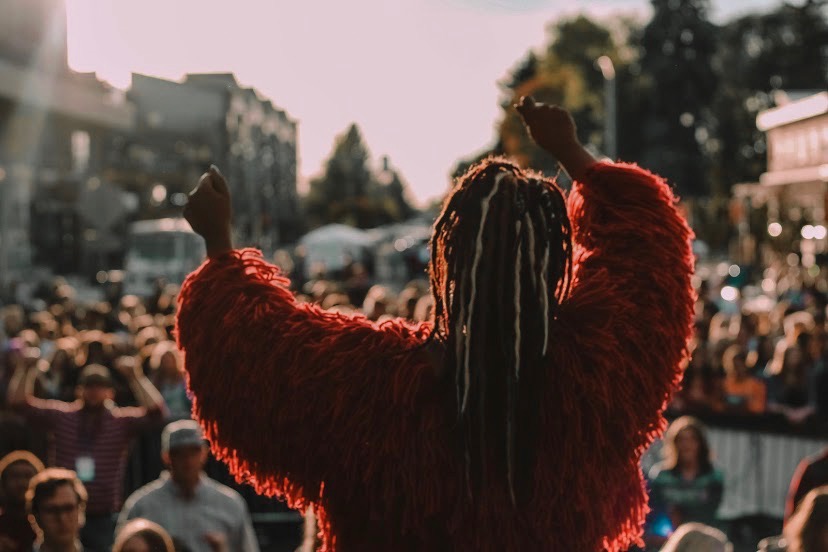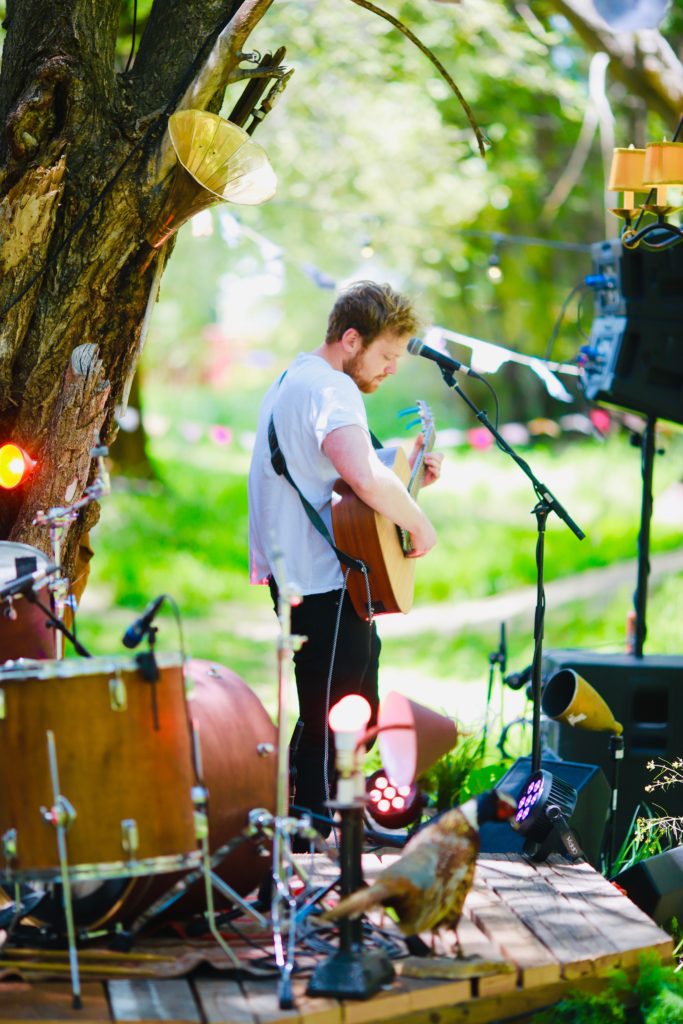
See also “Social media helps local musicians reach new heights“
Utah continues to turn out talented and high profile musicians that impact the music industry on a major scale. Some even come out of the Utah Valley college scene.
From family groups like The Osmonds to rock bands like The Killers and Neon Trees to solo artists like David Archuleta, all types of musicians have grown their roots in the Beehive State. As the digital age minimizes the difficulty of listening to new groups from other states and makes discovering artists easier, local music scenes like the ones in Utah County and Salt Lake County continue to grow.
“The digital age of music is making the world smaller, and the genres are less homogeneous, which is exciting,” said Tal Haslam, a BYU alum, solo artist and current frontman of the band Idiot Kid.
“I feel like the Utah music scene is growing in terms of the variety of music being produced here,” he said.
With the Provo Rooftop Concerts series helping launch local groups and bringing back bigger names like The Aces or The National Parks, venue owners and event planners join the ranks of artists to propel the Utah music scene further into the national spotlight.

Venues like the Velour Live Music Gallery and Kilby Court continue to host local talent along with visiting artists, making it possible for music junkies to find new bands, and for those bands to find new listeners.
“The music community has started growing in the past few months. There’s more collaborations, group events and networking happening,” said Bri Ray, a local solo artist who performs across the state and was featured on American Idol season 16. “There’s a cool music movement starting to happen within the music community in Utah Valley right now.”
When it comes to the Utah music scene, the divide between the Utah Valley artists and those up north is getting smaller and smaller, although the differing demographics do affect the type of music created.
Ray, who joins the ranks of Utah-based American Idol alumni like Jenn Blosil, James VIII and Ashley Hess, has been a prominent member of the Utah Valley music scene since her days at Timpanogos High School. When she graduated and began attending Utah Valley University in 2015, she began to learn what it meant to be a musician trying to break barriers in Utah Valley.
“Up north, you have a wider range of ages and genres and venues,” Ray said. “I do think that age range hinders the music community in Utah Valley because there’s only so much experience (in those ages). A lot of the community in Utah Valley are still just learning … but there are incredible mentors to be found in Salt Lake City.”
Haslam said the college bubble in the area may hinder musicians until the scenes merge and open the younger residents to the experience of those in Salt Lake City.
“A lot of the producers and venue owners are over 25, and they dictate a lot of what gets created and heard. My worry is that not enough young musicians get a chance and feel discouraged before they really go for it,” Haslam said. “So, if you’re 22 and you are not happy with how your stuff sounds, stick it out.”
As new venues pop up and musicians do local tours from Springville to Logan, the separate scenes in Utah continue to collide into a melting pot of music.
When it comes to performing in a conservative state, Utah’s atmosphere is unique. Members of The Church of Jesus Christ of Latter-day Saints hold a majority in Utah, and the Provo scene is full of BYU students, so the normal chaotic atmosphere of a local rock concert is sometimes quieted to a dull roar of clear-headed coeds bobbing their heads to music.
“I’ve performed all over at a ton of venues,” Haslam said. “The venues are usually sober and pretty stoic, but then venue owners are really invested in the scene.”
With a religious culture that overlays much of what Utah residents participate in and listen to, some artists may find breaking out of the Utah bubble difficult.
“Acoustic and band type groups thrive (in Utah) which is great, but if people want to tap into the R&B, pop and rap markets, they are best fitted to go elsewhere,” said Batchlor Johnson IV, an R&B artist. “Sometimes the stigma placed on the Utah scene can be limiting.”

However, there is a high level of talent and influence concentrated in the state.
“The idea that Utah has propelled artists to the national stage is pretty much a myth. Every artist that has broken nationally from here has left for at least two years before they hit it,” Haslam said. “That being said, the producers and talent all has come out of Utah, and the national artists still continue to work out of Utah creatively.”
An example of an artist breaking boundaries without sacrificing dedication to the beliefs of the community is JTM, formerly known as James the Mormon. His take on hip-hop tracks with a religious message reached outside of the boundaries of Utah and into Latter-day Saint communities across the globe. After JTM made his debut, more people outside of Utah began looking for artists to follow inside the state.
As the Utah music scene grows to meet the music industry as a whole, the artists are growing along with it. With the potential there, musicians are making a collective call to those in the state to support their own people and do their part in continuing to make the music scene in Utah powerful.
“We are just now starting to get to where we need to be to go nationally. We need more organization and more people stepping up to support the music scene,” Ray said. “It’s a good time now with all the growth at Silicon Slopes. People are ready for something fresh.”




